Last week we learned how to cook Ramen with a Japanese expert – Kohei Yagi. Kohei, known in Poland as Japończyk Gotuje (a Cooking Japanese) is responsible for many different ramen recipes in various restaurants spread over the country. He is a true ramen enthusiast and a scientist so we were really excited to learn from a ramen master 😉
Polish Your Cooking is a relatively new culinary school in Warsaw. They do many different types of workshops from traditional polish pierogi (aimed mostly at foreigners) to unknown asian cuisines. I did take part in one workshop in there before. Then it was organised with bloggers in mind and we were learning some malaysian recipes. I already knew the place is pretty cool and you can really learn something during those workshops so I immediately signed up when I saw they were organising a ramen workshop.


I knew of Kohei Yagi before the workshop. In my regular job I do a lot of market research on various topics, one of the reports I had to do last year concerned newest foodie trends in Poland, specifically Japanese and Korean influences. Naturally Kohei, as a ramen authority in Poland came up. He has a blog where he shares authentic Japanese recipes (he’s of Japanese origin) and on his Facebook Profile he educates Polish foodies about Japanese culinary traditions – ramen included. He portrays ramen as especially technical and difficult dish. He’s a scientist himself, so he explains the chemical reactions and aspects of preparing ramen – significance of water softness, combination of flavours and odours, time that is needed to prepare the broth.
Crazy about ramen
Ethnic cuisines always come to Poland through the filter that is Western Europe and America. Asian culinary influences began to emerge in Poland after 1989. Then Asian food was either cheap „Chinese” (which is actually a mixture of Vietnamese, Chinese, Thai and Polish culinary traditions) or aspirational sushi. No one stopped to think if maybe there’s something more to eat in Japan than just sushi. Now things are different. It’s trendy to know the difference between Vietnamese, Sri-Lankan and Malesian. People started travelling to Asia, reading Western foodie blogs, following Netflix documentaries. Now the aspirational aspect of Japanese food is less money-oriented and more identity-based. It’s trendy to know the difference between sushi and temari, eat onigiri instead of a sandwich, and buy ramen instead of Vietnamese Pho.

What’s important is that ramen, just like sushi few years ago, is aspirational. It’s portrayal in media is contradictory. On one hand it’s an ultimate comfort food and young trendy people in biggest Polish cities will tell you that there’s nothing better than ramen when you need a hangover cure. On the other hand ramen is twice the price of Vietnamese Pho. It’s said to be a very technical soup, difficult to prepare and therefore expensive. Many Polish chefs started to cook ramen and they’re being criticized for not delivering the real thing.

And here comes Kohei Yagi and the ramen craze. Ramen in Warsaw became super hyped when it started being served from time to time in a popular Uki Uki restaurant in pop-up form. Once a month they sold about a hundred portions of this soup in one day. It was announced on a Facebook page beforehand. Every time people would take up positions in long queues. Majority of them did not get the ramen due to the limited number of portions. And so the legend of ramen was established. Everyone wanted to taste the unobtainable exclusive ramen.
Recipe and techniques
Ok how about the actual workshop? Well, it was pretty cool and definitely very informative. most of participants seemed like they really knew their way around the kitchen, I might be wrong but many of them seemed like chefs or owners of restaurants who really wanted to learn about authentic ramen to be able to serve it to their guests. We, on the other hand, definitely are just amateurs who like to cook and enjoy a good soup.

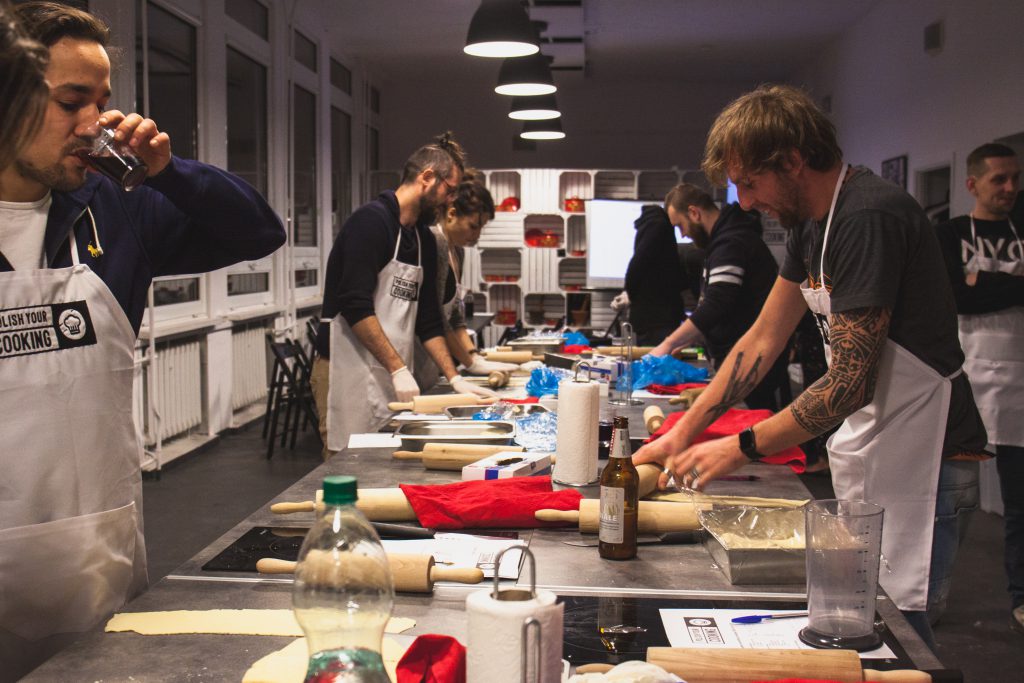
The whole thing started with a little snack (a different kind of onigiri but I can’t remember the name of it), than we pured ourselves some wine and were ready to sink in the knowledge. The workshop consisted of two major parts – the technical lecture and practical part so actually cooking something 😉 We learned about all ramen parts: noodles, kaeshi, broth, flavoured oil and different types of toppings. When you add all of those you’ll have your ramen. Kohei explained how water affects the taste and smell of the soup and how to mix the flavours together when “designing” your ramen. The important thing is that flavours have to “head in the same direction”, the tastes need to be similar, adding something bitter when everything is sweet would ruin the ramen. We received Kohei’s ramen recipe which includes all of the basic parts, but I will not share it as I’m not sure if it’s not some kind of a secret 😉 I’ll just cook my own, when I decide that I have nothing better to do than to spend several hours cooking dinner.

Creating ramen takes a long, long time as a broth has to boil for several hours (how long depends on a base, whether it’s chicken, beef, vegetable or fish broth; as well as on the softness of water). Kaeshi (tare) needs about an hour and a half as well. So we had those things prepared for us to use, it would be impossible for us to make it during the workshop. Kohei explained that broth is a taste of ramen and kaeshi is a direction for the ramen. When you combine them together you have a final result. There are different types of tare (soy sauce, salt or miso based), we had shoyu tare and shio tare to choose from. As for the broth, there are two types: chintan (clear broth) and paitan (creamy broth). We had the opportunity to taste both during the workshop. They’re completely different!
Taking things in our own hands!
We had some of the ramen ingredients ready, but we still had to make our own noodles. And it was fun! First, we mixed all the ingredients together and wrapped it in cling film to rest. After some time the real adventure began. We had to step on the dough and “dance on it” a little. Unconventional cooking method for sure! 😉 Then it was time to roll it all out until it was thin enough and cut it. We used pasta making machines for that.
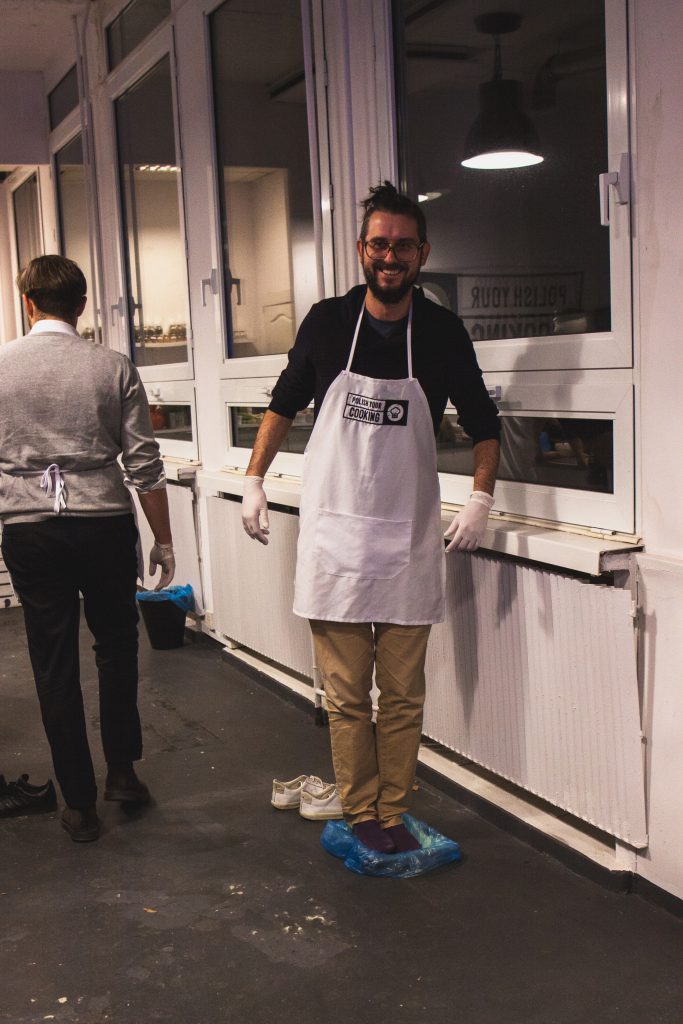
After we finished making our noodles we tasted all of the ingredients and decided on our ramen. We had many different flavoured oils and toppings to choose from, to make our soups taste good and look instagrammable 😉 I went for a mixture of creamy broth with salt-based tare, sesame oil and various toppings. I was quite pleased with the result. The interesting part was the tasting, as everyone’s ramen tasted completely different.
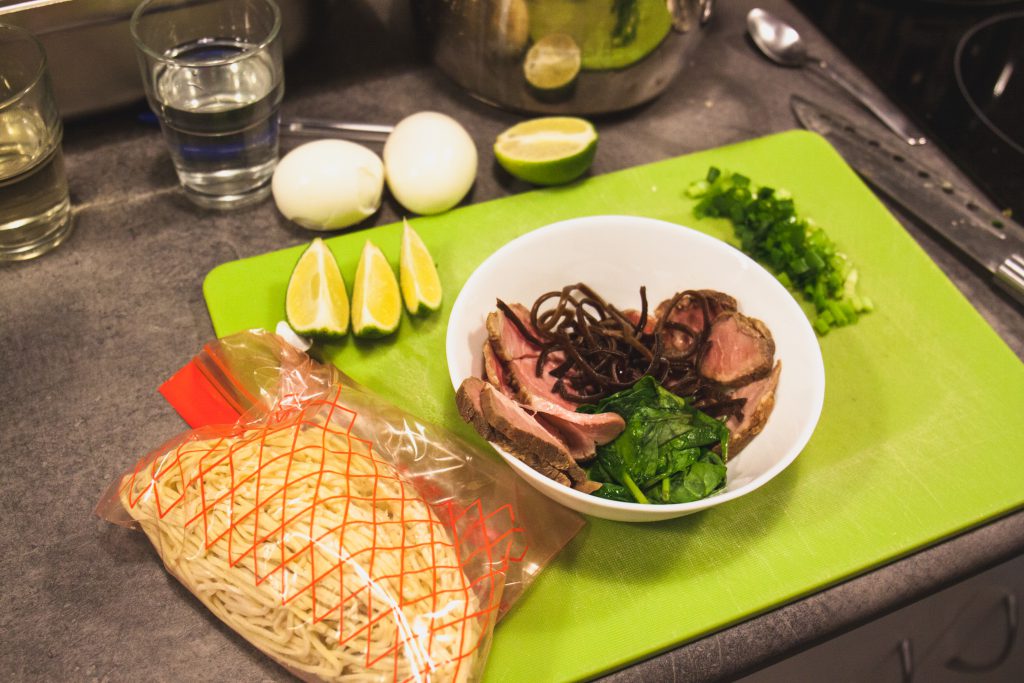
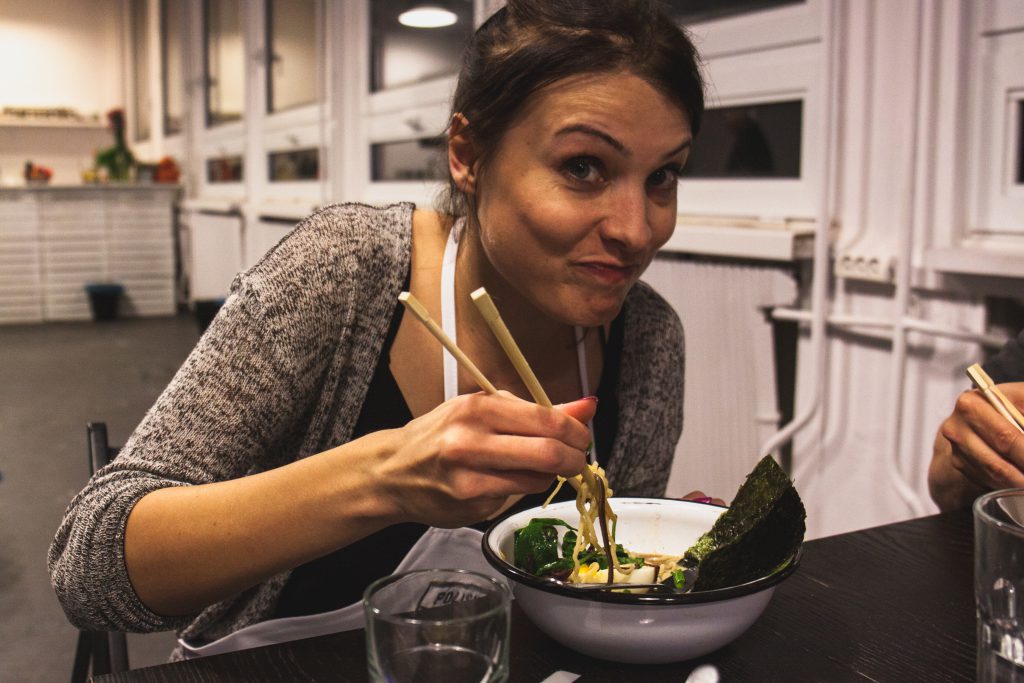
I higly recommend visiting any of the restaurnats where you can taste ramen created by Kohei. You will not be dissapointed. If you enjoy cooking, try one of the workshops at Polish Your Cooking. They’re always interesting and fun. And hopefully the ramen workshop will come back at some point, keep checking at the school’s Facebook page.
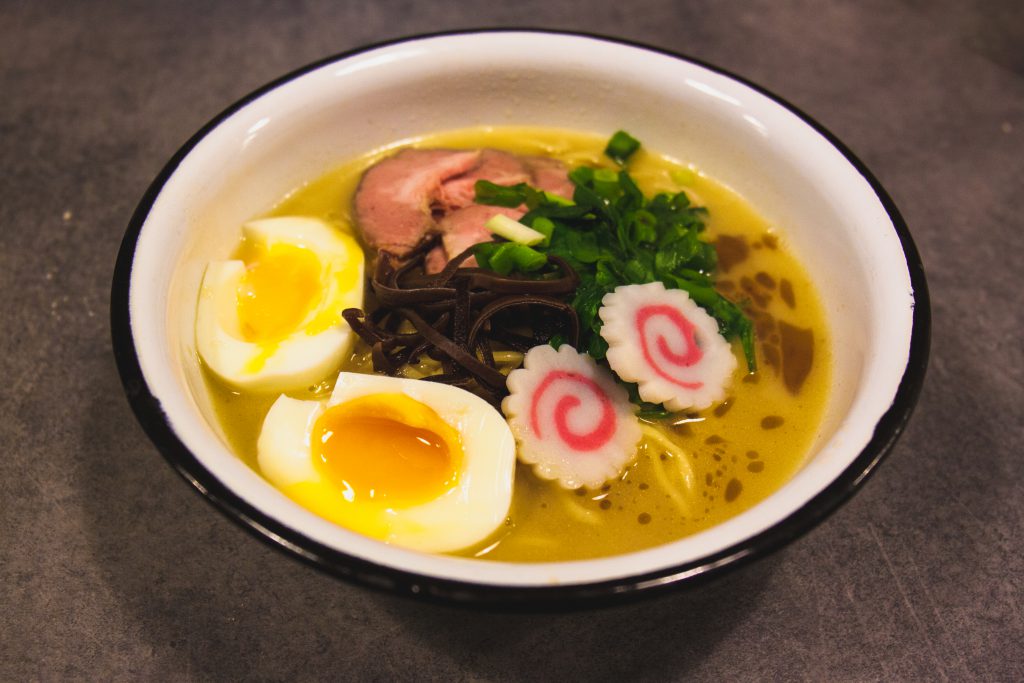
[Where] Polish Your Cooking, ul. Długa 44/50, Warsaw
[When] Check upcoming classes here.
[How much] Around 200 PLN per person.
